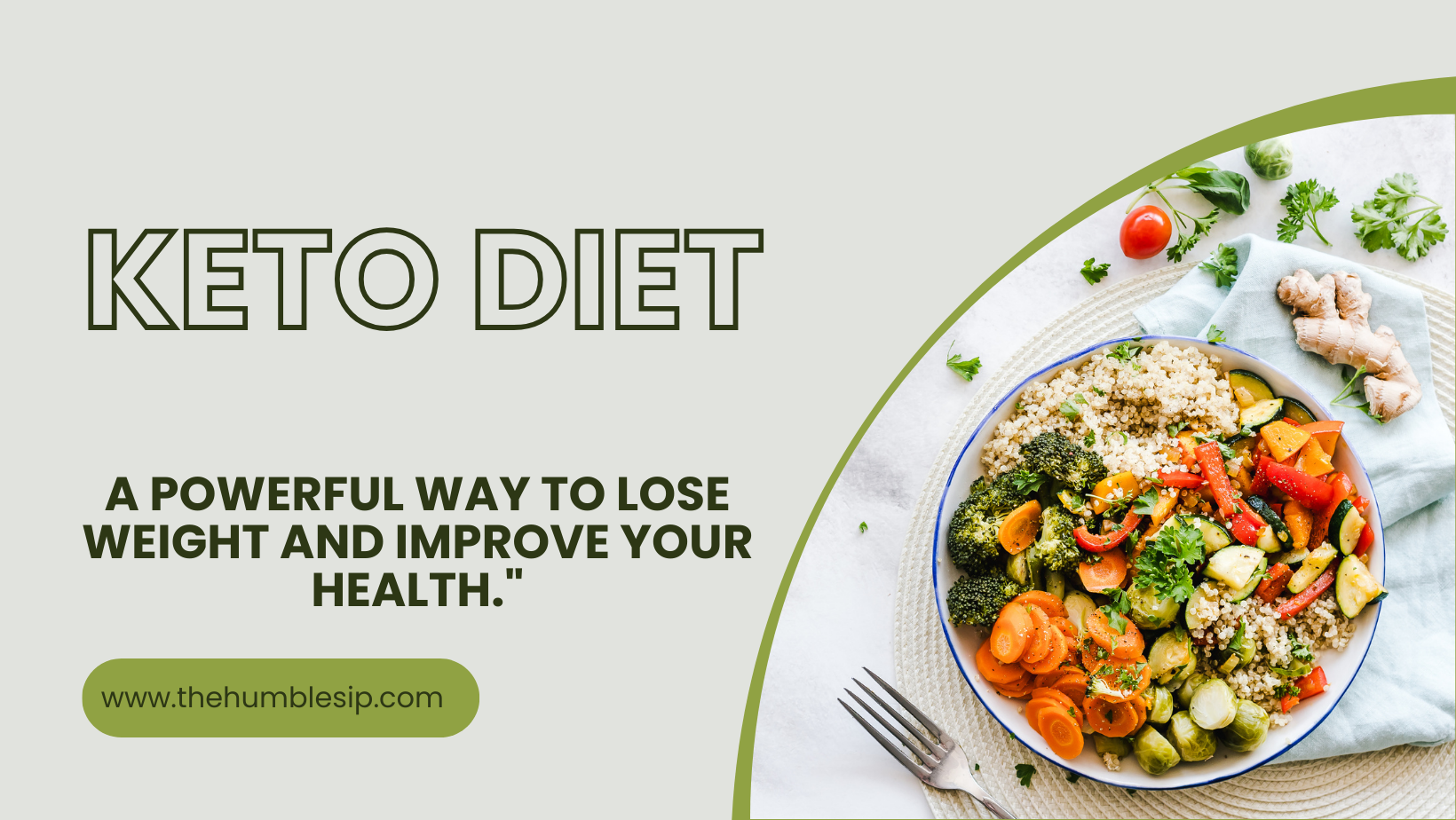KETO DIET FOR BEGINNERS
- 7 Views
- kevinchde
- November 2, 2023
- Uncategorized
The “keto diet,” also known as “the ketogenic diet,” is a popular low-carb, high-fat diet that has been shown to help with weight loss and certain health conditions. If you’re a beginner looking to start the keto diet, there are some important things to keep in mind to ensure success.
Understanding the Basics of Keto Diet

The keto diet is a low-carb, high-fat eating plan that is meant to get your body into a state called ketosis, where it burns fat for energy instead of carbs.
Carbs are limited to 50 grams a day, and fatty foods make up 60% to 80% of your daily calories. Further, proteins make up 15% to 20%, and these three groups work together to make up the rest of your diet.
Carbs (50 g) + Fatty foods (60%-80%) + Proteins (15%-20%) = Keto plate
To start a keto diet, you will want to plan ahead and gradually transition to the diet by adding in more healthy fats and slowly decreasing your carbs

This means you’ll need to avoid foods like bread, pasta, and sugar and focus on eating healthy fats like avocado, nuts, and olive oil.
How does a keto diet work?
The ketogenic diet encourages weight loss by starving the body of carbs, its main energy source, and forcing it to burn fat for fuel, according to the Harvard T.H. Chan School of Public Health. Foods with carbs are converted into glucose, or blood sugar, which the body uses for energy.
The body always uses glucose first before using stored fat for energy because it’s the easiest kind of energy. The ketogenic diet restricts carbohydrate consumption, so the body burns fat for energy. This causes the liver to break down fat and produce ketones, metabolic byproducts. The body uses ketones instead of glucose to fuel itself.
Prepare your kitchen
Remove non-edible items from your fridge, freezer, and cabinets before commencing the keto diet. An afternoon to go through your food stock and eliminate what you can’t have. For faster meal prep, divide your cabinets into “low-carb” and “regular” categories.
Types of Keto Diet
Standard ketogenic diet (SKD)
This diet is low-carb, moderate-protein, and high-fat. On the other hand, the average daily diet has 70% fat, 20% protein, and 10% carbohydrates.
Cyclical ketogenic diet(CKD)
5 ketogenic days are followed by 2 high-carb days
Targeted ketogenic diet (TKD)
add carbs around intense workouts
High-protein ketogenic diet (HPKD)
It’s like SKD but allows more protein. Further, the typical ratio is 60% fat, 35% protein, and 5% carbohydrates.
Foods to Eat on the Keto Diet
- Healthy fats: avocado, olive oil, coconut oil, ghee, butter, and nuts.
- Proteins: meat, fish, poultry, and tofu.
- Low-Carb Vegetables: leafy greens, cauliflower, broccoli, zucchini, and peppers
- Dairy: full-fat cheese, yogurt, and cream.
- Berries: small portions of berries, such as strawberries and blackberries.
- Eggs: A versatile and protein-rich food perfect for the keto diet.
Foods to Avoid
- High-Carb Foods: Bread, pasta, rice, potatoes, and sugary snacks
- Sugary Drinks: soda, fruit juices, and other high-sugar beverages
- Processed foods: These often contain hidden sugars and unhealthy fats.
- Fruits: High-sugar fruits like bananas, apples, and grapes.
- Legumes: Beans, lentils, and peas are relatively high in carbs.

Start with Keto
- Educate yourself: Familiarize yourself with keto-friendly foods and those to avoid.
- Set Goals: Determine what you want to achieve with the keto diet, whether it’s weight loss, better energy, or improved health.
- Plan Your Meals: Create a meal plan that includes a variety of keto-friendly foods.
- Track Your Macros: Use a food tracking app to monitor your daily carb, protein, and fat intake.
- Stay Hydrated: Drink plenty of water, as you may lose more fluids on the keto diet.
Potential Side Effects
There may be transitory adverse effects, known as the “keto flu.” As your body changes to using fat for energy, you may experience fatigue, headaches, dizziness, and irritability. Symptoms normally disappear within a week or two.
Conclusion
The keto diet can help you lose weight and improve your health. However, it requires knowledge and attentiveness. Consult a doctor before starting the diet, especially if you have health issues. Remember that long-term health advantages require a balanced, nutritious diet.


